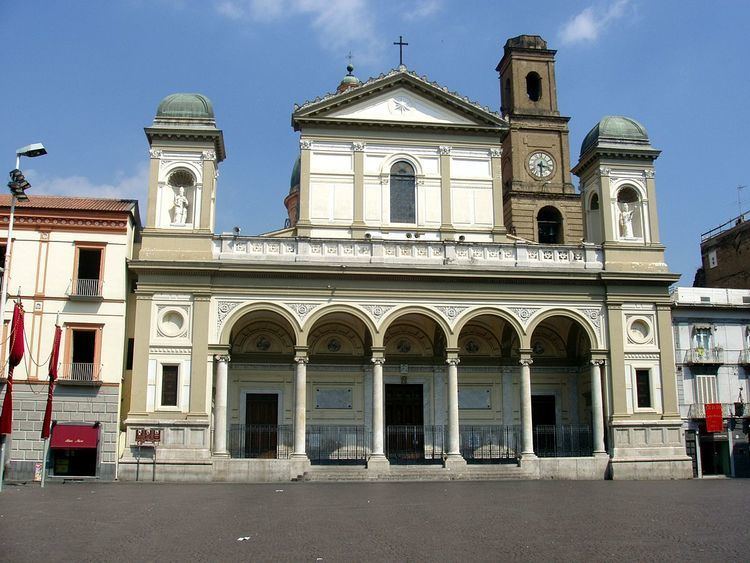Parishes 115 Area 450 km² | Established 2nd Century Phone +39 081 311 4667 | |
 | ||
Population- Total- Catholics (as of 2004)523,900502,000 (95.8%) Cathedral Basilica Cattedrale di Maria SS. Assunta Similar Diocesi di Nocera Inferiore, Parrocchia Maria Ss Della Stella, Parrocchia S Felice In Pincis, Parrocchia S Michele, Complesso Monume Di San D | ||
The Diocese of Nola (Latin: Dioecesis Nolana) is a Roman Catholic diocese in Italy, suffragan of the Archdiocese of Naples. Its seat is the Campanian city of Nola, now a suburb of Naples. Its cathedral is dedicated to Mary of the Assumption (Italian: Basilica Cattedrale di Maria SS Assunta). It is traditionally credited with the introduction of the use of bells into Christian worship.
Contents
Antiquity
The diocese was founded in the late 2nd or early 3rd century by St Felix. He was martyred, as were St Januarius's companions Reparatus, Faustillus, and Acacius. The early center of worship was at Cimitile, outside Nola proper and now named for its cemetery. The basilica of St Felix Martyr was built by Bishop Paulinus in the late 4th or early 5th century. Paulinus is traditionally credited with the introduction of bells into Christian ritual, whence two major medieval forms became known as nolas and campanas. Felix's relics, and then Paulinus's own, made the site a major focus of Christian pilgrimage. (Paulinus's body was removed to the neighboring diocese of Benevento in 839, traded to the emperor Otto III in 1000, and finally restored to Nola in 1909.) St Adeodatus was a 5th-century archpresbyter within the diocese; his metrical epitaph has been preserved.
Middle Ages
John, the exiled pope of Alexandria, became bishop of Nola in 484. Around 505, Bishop Paulinus III supposedly enslaved himself to free a widow's son. Several buildings were restored under Bishop Lupicinus around 786. In 1370, Francis Scacciani began construction of the present Gothic cathedral, which was completed by Gian Antonio Boccarelli in 1469. The seminary was founded by Antonio Scarampi in 1549, introducing the reforms of the Council of Trent. In 1585, Fabrizio Gallo founded several charitable institutions. G.B. Lancellotti, who served as bishop for much of the first half of the 17th century, also served as papal nuncio to Poland from 1622 to 1627. Francis M. Carafa devoted great attention to the education of the local clergy and Traiano Caracciolo constructed a new seminary in 1738.
